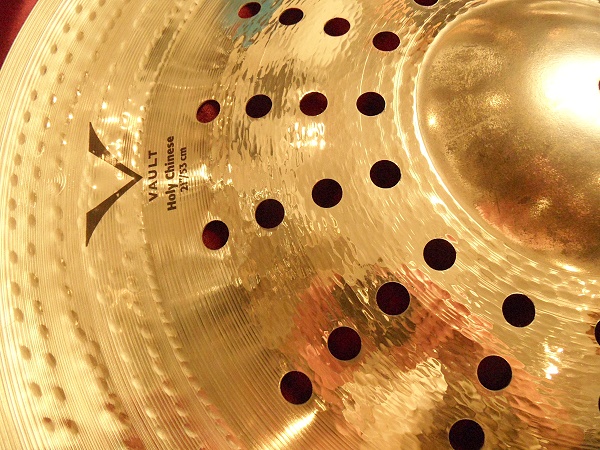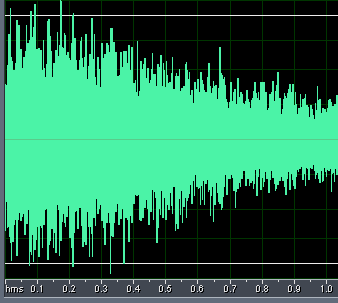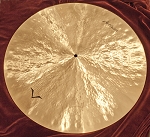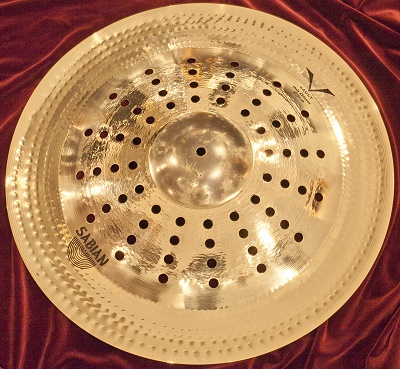In the 1950’s Avedis Zildjian got together with Gene Krupa to make something that would be called a Pang cymbal. It looked like a regular cymbal with the edge turned upward, and it had a distinctive Far East sound quality. The Swish cymbal, a variation on the Pang, was also developed, and it had a higher pitch with more wash. Jazz drummers started using Pangs in their kit, and these days, many drummers have several of them in their setup, calling them simply China cymbals. While the first ones didn’t look distinctive except for the turned up edges, the China cymbals of today have all kinds of unusual characteristics, including engravings.
Sabian collaborated with Chad Smith and introduced what they call the Holy China cymbal, because it has holes in it. Drilling holes and slots in cymbals, calling them Special Effects cymbals, is very popular now, and Sabian has done this with the Holy China line. Available in 19″ and 21″ sizes, the present review covers the 21″. We have also reviewed the 19″ version.
Specifications
- Manufacturer Line: Vault Holy China
- Type: Crash and Ride
- Style: Medium Thin
- Alloy: B20 – CuSn20 – 80% Copper, 20% Tin
- Diameter: 21″
- Metal Work: CNC Hammered, Drilled, and Lathed, Brilliant Finish
- Weight: 4.5 Pounds
- MSRP: $ 537 USA; Street Price $319
- Sabian
The bell is not lathed or hammered, and the region next to the bell is hammered and contains many holes, then a lathed sector, with the final outer region having been hammered and lathed. There are four circles of holes in the middle of the cymbal compared to three circles in the 19″. (The close-up photo shows it labeled “Holy Chinese”. The review sample was from an early production run, and they changed it to “Holy China”.)
Its sound is distinctively Chinese, but the holes add a very unique tonality. In fact, I have never been a fan of China cymbals, but the Sabian Holy China series is so outrageously good, I have purchased the 19″ review sample.
Both the 19″ and 21″ versions are very loud, that is, they produce a loud sound without having to hit them very hard. For a jazz drummer, it can just be tapped on the edge. I preferred the cymbal with the bell facing up (convex surface upward), and the sound samples were gathered in that configuration. However, if you like to play your cymbals really loud and strike them with a heavy hand, mount the cymbal in reverse so you will be hitting the flat surface instead of the edge.
The sound is much like the 19″ Holy China, only deeper and louder. This is, in fact, one of the loudest cymbals I have ever heard (assuming you play it hard).

The crash spectrum shows a focus of energy between 800 Hz and 3.5 kHz, and then it declines to 35 kHz. This is a different response than the 19″ Holy China, but it is not a large difference. At the end of two seconds, the high frequency energy has dissipated more than the low frequencies.

The Level vs. Time spectrum shows a peak in loudness at 0.1 seconds, with a slower decay than the 19″ Holy China. For metal rockers, obviously, you should choose the 21″ version, and for those jazz aficionados who want a China cymbal on their kit, the 19″ Sabian Holy China is a killer choice.

Click HERE to listen to an audio sample, which will include crash (when appropriate), ride, and bell sounds (these are 24 bit, 176.4 kHz wav files, so be sure your sound card is capable of handling these high resolution sound files).



